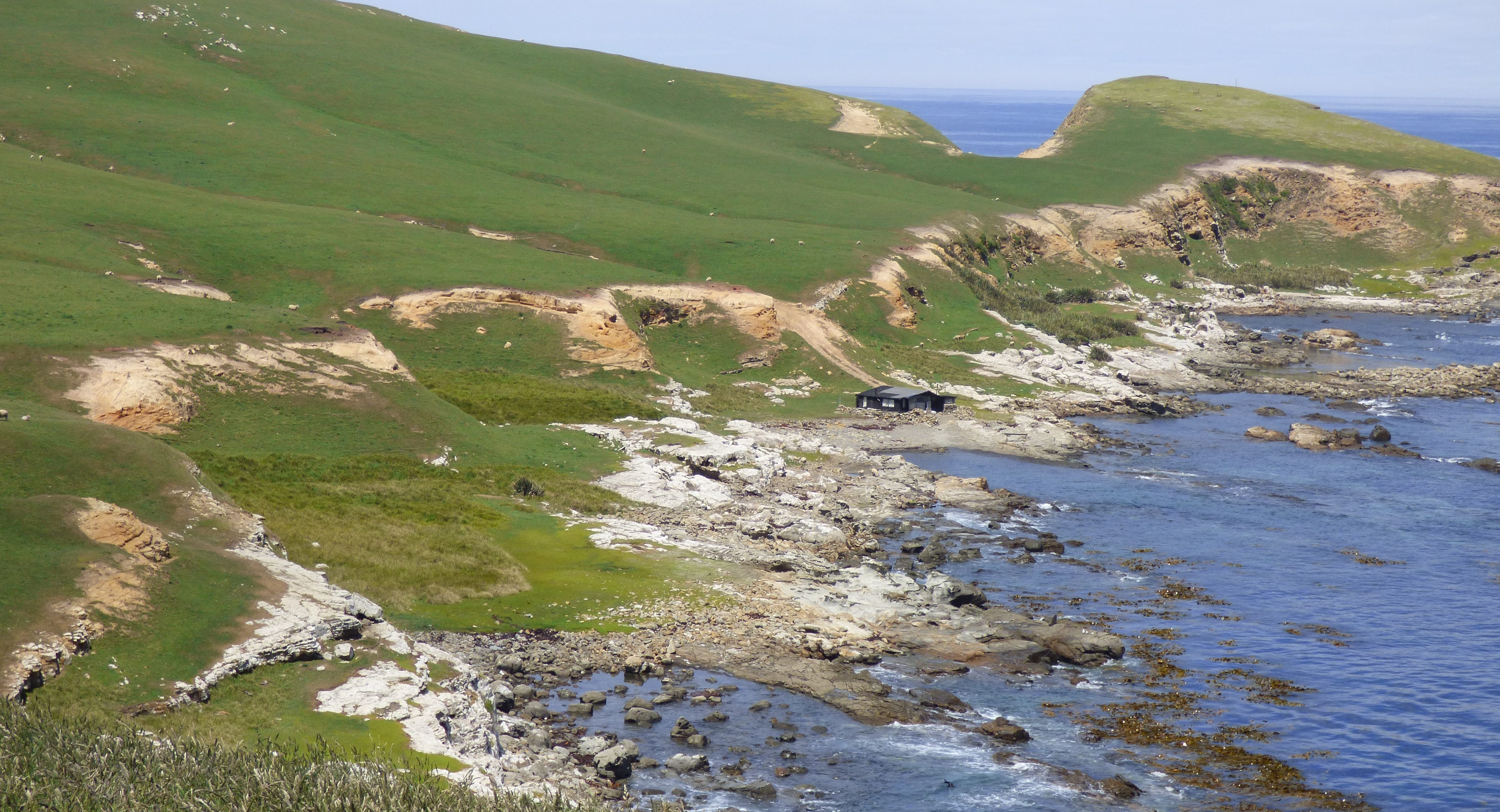
MEDIA RELEASE: Hoiho killed by dog at Long Point Reserve, Catlins
Dog owners are being warned they must take better control of their dogs following the deaths of two yellow-eyed penguins/hoiho in the Catlins if they want to help the species survive.
In the past month, two of the nationally endangered birds have been attacked and killed along the Catlins coast at the Yellow-eyed Penguin Trust’s Long Point Irahuka Reserve. Necropsies on both birds confirmed wounds were consistent with dog attacks.
The Yellow-eyed Penguin Trust says these deaths are another devastating blow to a species battling multiple threats such as disease, starvation and climate change.
Trust ranger Ben Goldsworthy discovered the body of a bloody and recently-killed hoiho during a recent check of the moulting penguins at Long Point.
There were dog tracks next to the bird’s body, he says.
“I was looking for moulting penguins and checking their condition and the last thing I expected to find was a bird killed by a dog. We’ve had a big decline in the numbers of hoiho at Long Point and can’t afford to lose any more to dog attacks.”
A few weeks prior to this, another bird was found dead at the same location. Both birds were sent to Massey University for necropsy. In February, a Snares crested penguin was killed by a dog at Kakanui, North Otago.
Trust General Manager Sue Murray says these deaths could easily be prevented.
“Dog control is in the hands of their owners. We urgently seek the public’s support. Dogs should not be in wildlife breeding areas. With so many impacts on the birds it is devastating when deaths occur unnecessarily.”
Department of Conservation (DOC) Murihiku operations manager Tony Preston says while dog control should be front of mind at all times of the year, hoiho are particularly vulnerable during moulting when they spend three to four weeks ashore.
“Penguins are particularly vulnerable at this time of year and are easily stressed. Even the most well-behaved dog is capable of scaring or hurting a penguin and dog owners are required by law to ensure their dog does not injure, or cause distress to wildlife.”
“We need to share the beach responsibly with these taonga species or we face losing them altogether.”
DOC carries out monitoring, research and intensive management for yellow-eyed penguins alongside Treaty Partner Ngāi Tahu, key programme partner the Yellow-eyed Penguin Trust, important local associates University of Otago, Penguin Rescue, Penguin Place and many community groups and volunteers.
Long Point / Irahuka Reserve was purchased by the Yellow-eyed Penguin Trust in 2009 and is home to breeding pairs of yellow-eyed penguins/hoiho.
–Ends–
Contacts: Sue Murray, Yellow-eyed Penguin Trust General Manager 021 488 285
Bridget Railton, DOC Communications Advisor, 027 532 0498
Background information
- The Long Point Irahuka Reserve is off limit to dogs under the Reserves Act.
- Yellow-eyed penguin mainland population is currently about 250 breeding pairs, historically numbers have fluctuated between 400-600 breeding pairs on mainland NZ.
- Overall this season, the number of nests was very low, similar to last year. Fledging success was good in the Catlins and Stewart Island, but was low in Otago and at Codfish Island/Whenua Hou.
- The penguin communities work closely together to manage and mitigate detrimental events affecting hoiho survival throughout the breeding season. As well as DOC and YEPT, other parties involved include Penguin Rescue, Penguin Place, Southland Forest and Bird, Otago University, Wildbase (Massey University), Dunedin Wildlife Hospital, landowners, local Rūnanga and volunteers.
- Information for Dog Owners:
- In case you encounter wildlife, make sure you have a lead to keep your dog and the wildlife safe!
- Alert fellow dog owners of wildlife ahead
- Don’t let your dog go astray, keep them leashed 4 car lengths away!
- Dogs should not be taken into sensitive wildlife areas


